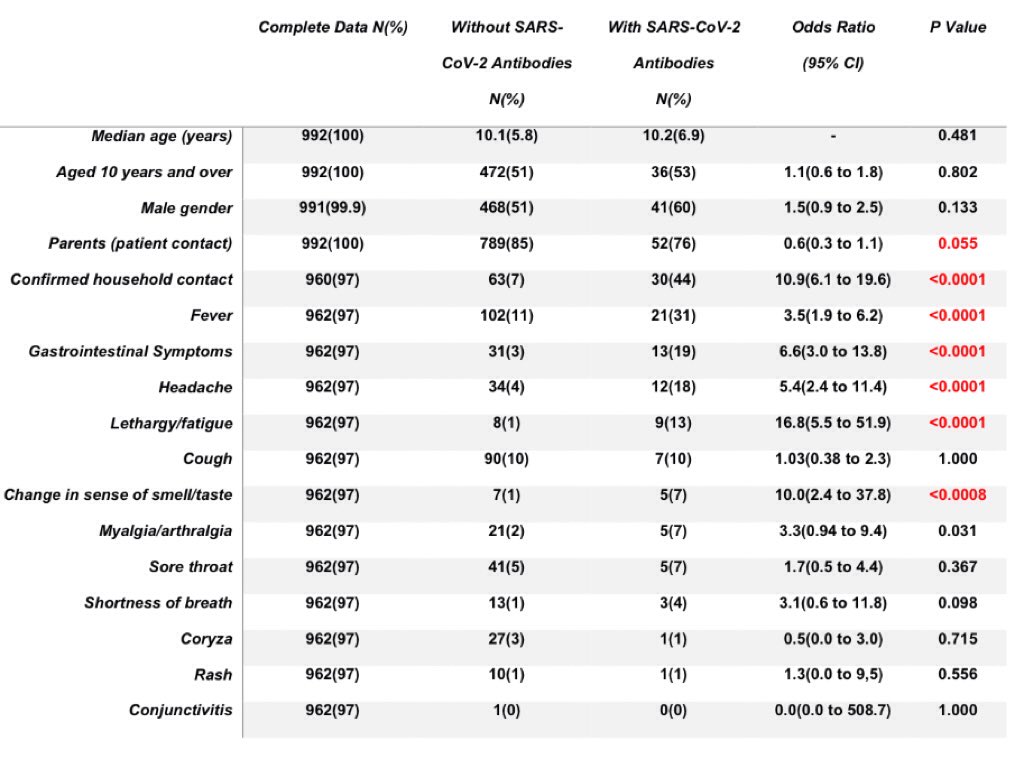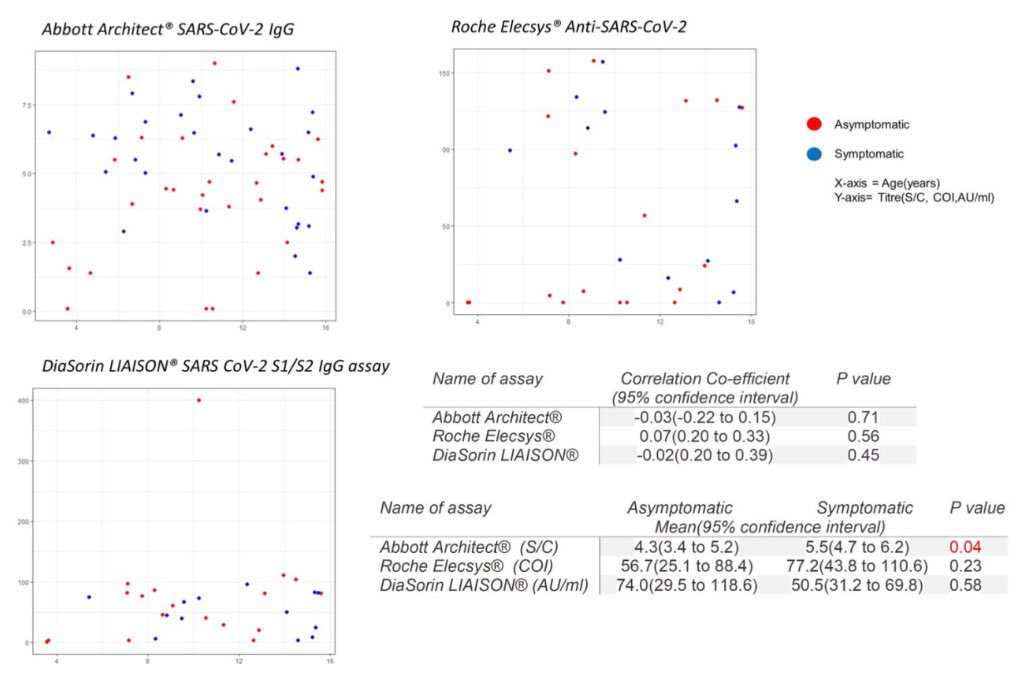(1/10) Important pre-print study (interpret cautiously) of 992 UK children showing 6.9% had #SARSCoV2 antibodies, suggesting they are at similar risk of infection as adults, & that young and older children are similarly susceptible. 50% were asymptomatic.
https://www.medrxiv.org/content/10.1101/2020.08.31.20183095v1">https://www.medrxiv.org/content/1...
https://www.medrxiv.org/content/10.1101/2020.08.31.20183095v1">https://www.medrxiv.org/content/1...
(2/10) The sample comprised 1,007 children of healthcare workers aged 2-15 years at the time of recruitment (16 April to 3 July). Blood samples were obtained from 992. Half the sample (49%) were aged under 10 years and 51% were male.
(3/10) The proportion of children who tested positive for #SARSCoV2 antibodies was 6.9% (95% confidence interval 5.4 to 8.6%). The proportion was lowest in Belfast (0.9%) and highest in London (11.6%).
(4/10) The proportion of children with antibodies against #SARSCoV2 (6.9%) was similar to that for people aged 16 years and older in the general population (6.3%; 95% confidence interval 5.0% to 7.8%).
https://www.ons.gov.uk/peoplepopulationandcommunity/healthandsocialcare/conditionsanddiseases/bulletins/coronaviruscovid19infectionsurveypilot">https://www.ons.gov.uk/peoplepop...
https://www.ons.gov.uk/peoplepopulationandcommunity/healthandsocialcare/conditionsanddiseases/bulletins/coronaviruscovid19infectionsurveypilot">https://www.ons.gov.uk/peoplepop...
(5/10) Half of the children (50%) who had antibodies against #SARSCoV2 were asymptomatic (although this may be subject to recall bias).
The most common symptoms were fever (31%), gastrointestinal symptoms such as diarrhoea and vomiting (19%), and headache (18%).
The most common symptoms were fever (31%), gastrointestinal symptoms such as diarrhoea and vomiting (19%), and headache (18%).
(6/10) Only 38% of children who tested positive had fever, cough, or changes in smell or taste.
Therefore, the majority of children did not meet criteria for #COVID19 testing in the UK.
Current testing strategies will fail to diagnose most cases in children.
Therefore, the majority of children did not meet criteria for #COVID19 testing in the UK.
Current testing strategies will fail to diagnose most cases in children.
(7/10) There was no association between age and the presence of antibodies.
The proportion of children with antibodies was similar for children under 10 years (47%) and for those aged 10 years and older (53%).
The proportion of children with antibodies was similar for children under 10 years (47%) and for those aged 10 years and older (53%).
(8/10) A strength of the study is that it was prospective. Children were followed up to see if they would become infected, meaning that this study is more representative than many others.
(9/10) A limitation of the study is that the participants were children of health care workers, who may be more likely to be exposed to the virus than the general population.
(10/10) In conclusion, this study shows that the children of healthcare workers in the UK were similarly likely to be infected with #SARSCoV2 as members of the general population aged 16 years and older (6.9% vs. 6.3%), and that young and older children are similarly susceptible.
Addendum: the link to data for the general population in point 4 is broken. Here is the correct link: https://www.ons.gov.uk/peoplepopulationandcommunity/healthandsocialcare/conditionsanddiseases/bulletins/coronaviruscovid19infectionsurveypilot/england17july2020">https://www.ons.gov.uk/peoplepop...
Minor clarification for point 7: the denominator was children with antibodies.
The proportion of children with antibodies in the entire sample was:
 https://abs.twimg.com/emoji/v2/... draggable="false" alt="▶️" title="Nach rechts zeigendes Dreieck" aria-label="Emoji: Nach rechts zeigendes Dreieck"> Under 10 years: 32/484 = 6.6%
https://abs.twimg.com/emoji/v2/... draggable="false" alt="▶️" title="Nach rechts zeigendes Dreieck" aria-label="Emoji: Nach rechts zeigendes Dreieck"> Under 10 years: 32/484 = 6.6%
 https://abs.twimg.com/emoji/v2/... draggable="false" alt="▶️" title="Nach rechts zeigendes Dreieck" aria-label="Emoji: Nach rechts zeigendes Dreieck"> 10 years and older: 36/508 = 7.1%
https://abs.twimg.com/emoji/v2/... draggable="false" alt="▶️" title="Nach rechts zeigendes Dreieck" aria-label="Emoji: Nach rechts zeigendes Dreieck"> 10 years and older: 36/508 = 7.1%
Young and older children were similarly susceptible.
The proportion of children with antibodies in the entire sample was:
Young and older children were similarly susceptible.

 Read on Twitter
Read on Twitter




